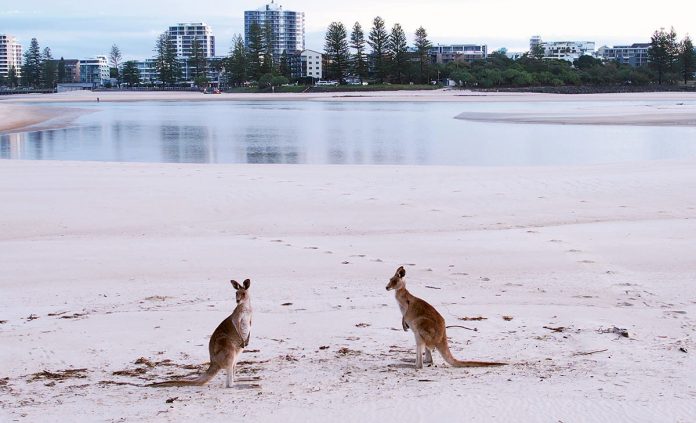A mob of macropods has been living the island life and proving their survival skills after being marooned by a tidal breakthrough.
At least four eastern grey kangaroos and two swamp wallabies have been spotted on the beach on the new and isolated northern section of Bribie Island.
They got stranded eight months ago when rough weather essentially caused a split in Bribie Island.
Photographer Damien Lange, of Moffat Beach, was stunned to capture amazing drone footage of some of the natives on the isle’s sandy tip, opposite Happy Valley at Caloundra.
“I first noticed them a couple of weeks ago and I initially thought they were wild dogs,” he said.
“So, I took some footage and saw three kangaroos. Then I took some more footage and saw six of them on the edge of the island.”
“I’ve seen them on the long strip of sand that juts out into the sea.
“They’ve been halfway out on the sand bank and on the water’s edge. They’re certainly not hiding.”
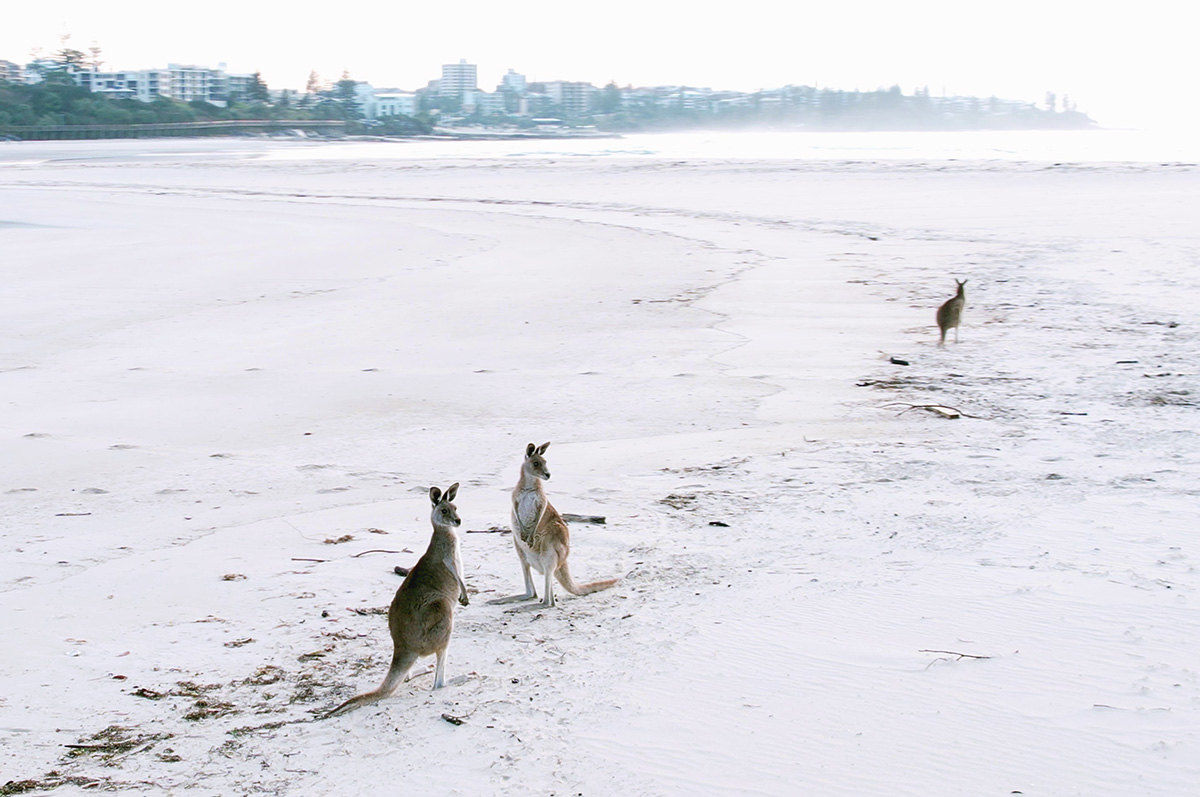
It was the perfect scenario for Mr Lange.
“I’ve been droning for about three years and I’ve been after kangaroo shots, travelling up and down the coast hoping to get some so I could sell them online and overseas.
“Then I suddenly came across these ones and I was like ‘You are kidding … what a great shot’.
“In the footage, you can see Bulcock Beach and the apartments and the blue water behind the kangaroos.”
The first stranded roo was spotted in January, which wildlife officers began to monitor.
Conservationist Brian Coulter, of Saltwater Ecology, has seen four eastern greys and two swamp wallabies on the isle.
He said he expected there would “be quite a number of them” that were essentially stranded.
Kangaroos can swim and they could traverse the Pumicestone Passage to the mainland, potentially at low tide and via huge sand banks that have emerged between the island and Happy Valley and between the island and Golden Beach.
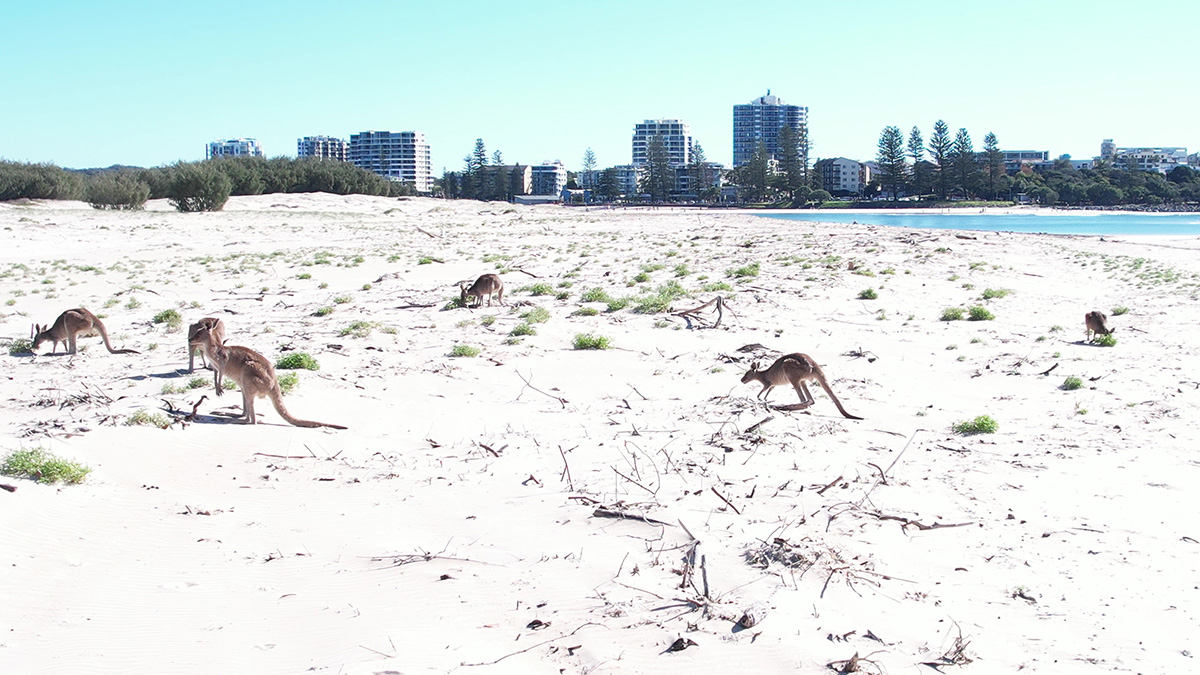
But Mr Coulter said they would be unlikely to do so.
“There’s not a great deal for them there as it’s developed with roads and cars,” he said.
They can’t go south to Bribie Island proper, due to the widening breakthrough, which Mr Coulter estimated was about 700m and had a strong current.
Mr Coulter said the animals should be able to survive, at least for a while, on the northern island.
“There is plenty of food for them,” he said.
“There is marine couch behind the dunes and there are some weeds on the beach they will nibble on.
“When it rains, there is fresh water in the casuarina forest, so they have enough food and water for now.
“But we’ll have to keep an eye on them just to make sure their condition doesn’t deteriorate too much.”
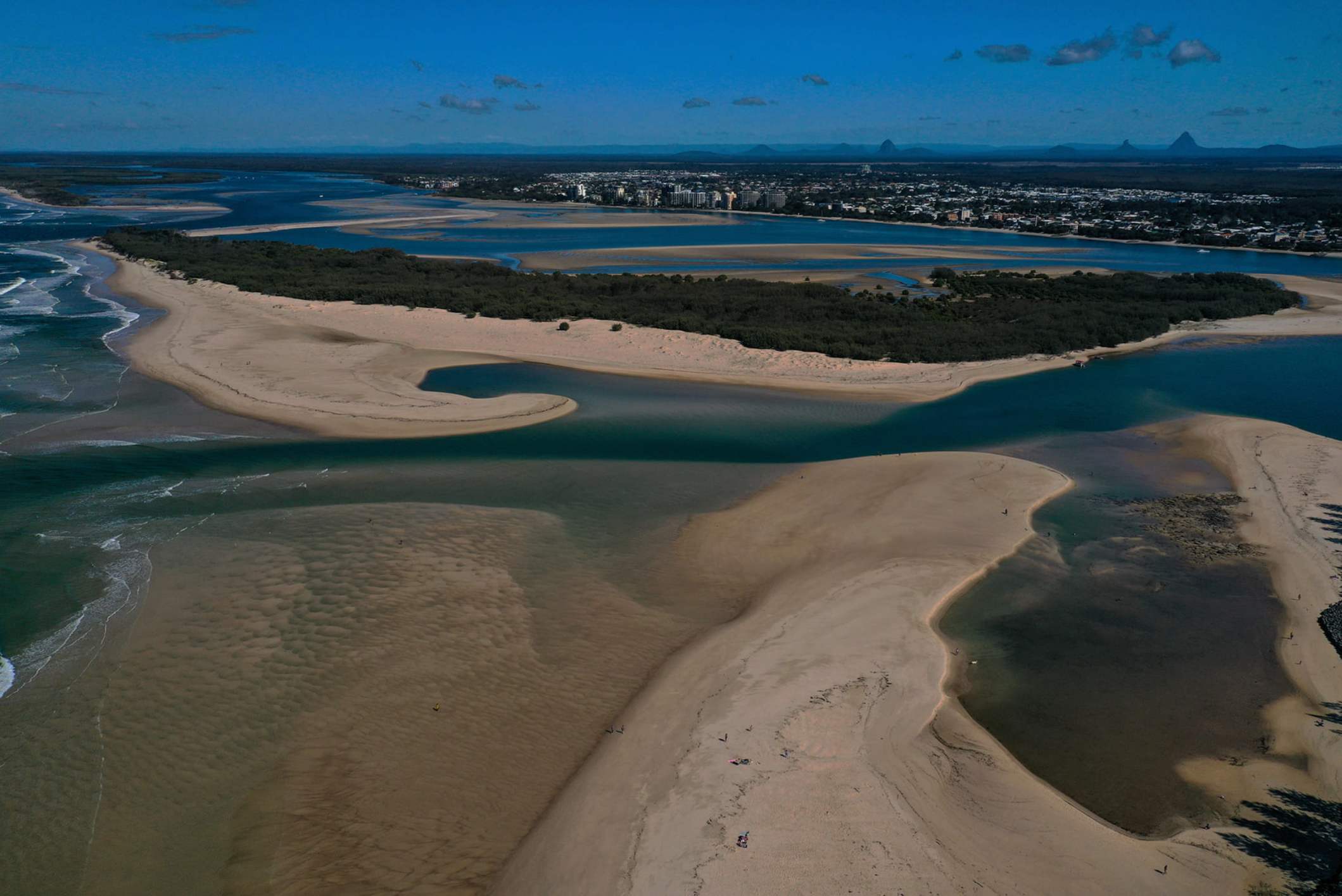
Mr Coulter, who lives in Golden Beach, said he would keep a close eye on them.
“If there’s any worries, we’d look at other measures,” he said.
That could involve relocation of the roos and wallabies, which would likely be tranquilised and shifted to Bribie Island.
Mr Coulter said roos and wallabies had always lived on the northern end of Bribie Island.
“There used to be feral pigs and foxes too. I’m not aware of them being there now but it would be easy to do a drone survey and see what is there.
Drones with infrared cameras can help operators identify roos, possums, gliders, birds and more.
Mr Coulter said wild dogs were also present on the outlying island.
“I heard a report from a lifeguard that a wild dog chased a kangaroo into the water, and it (the roo) ended up drowning,” he said.
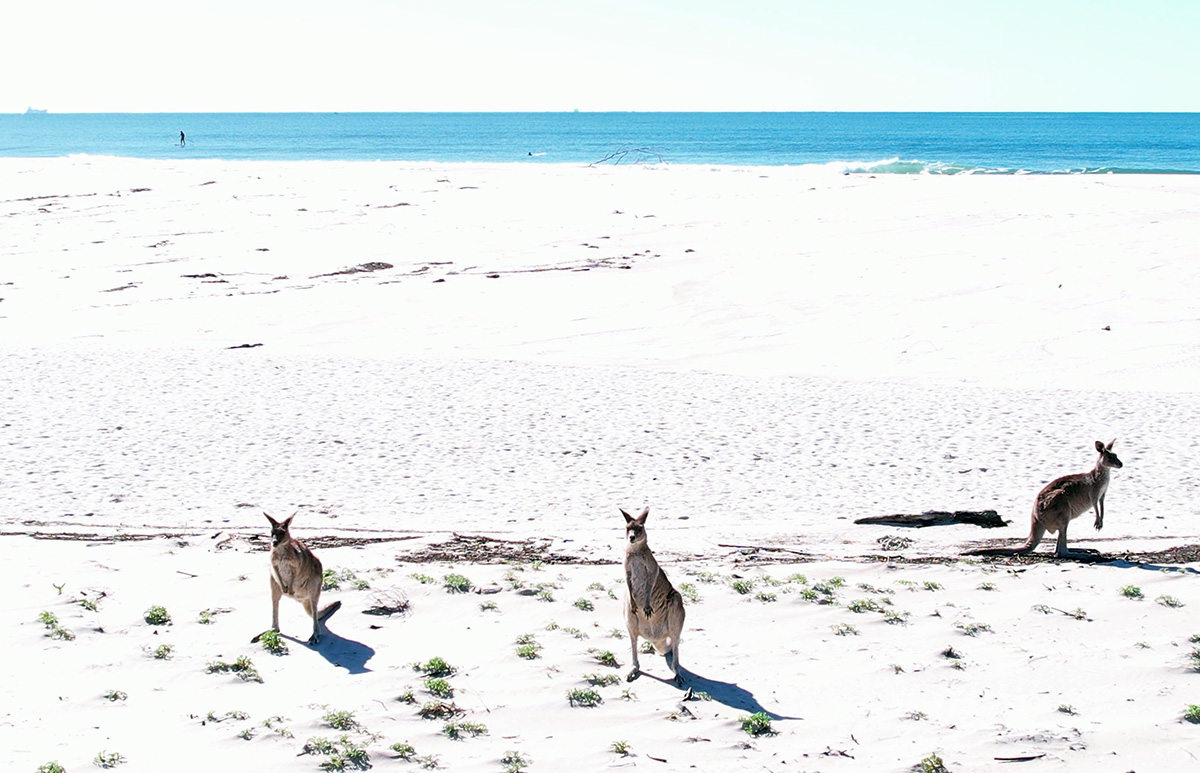
Mr Coulter said the roos and wallabies were “very visible”.
“If you come across Happy Valley to north Bribie, which only takes a couple of minutes on low tide, and you go for a walk, you will see them,” he said.
“The swamp wallabies, which are darker and smaller, are closer to the dunes while the eastern greys will come on to the beaches and forage on the seaweed.”
A spokesperson for the Department of Environment and Science said they were monitoring the wildlife on the northern island.
“The Queensland Parks and Wildlife Service is aware of kangaroos living on the northern side of the breakthrough at north Bribie Island,” the spokesperson said.
“As the macropods have successfully survived in the area since the breakthrough occurred in January this year, QPWS plans to leave the animals in-situ and will continue to monitor the wellbeing of the animals.
“Members of the public are reminded to stay clear of wild animals, including kangaroos.”
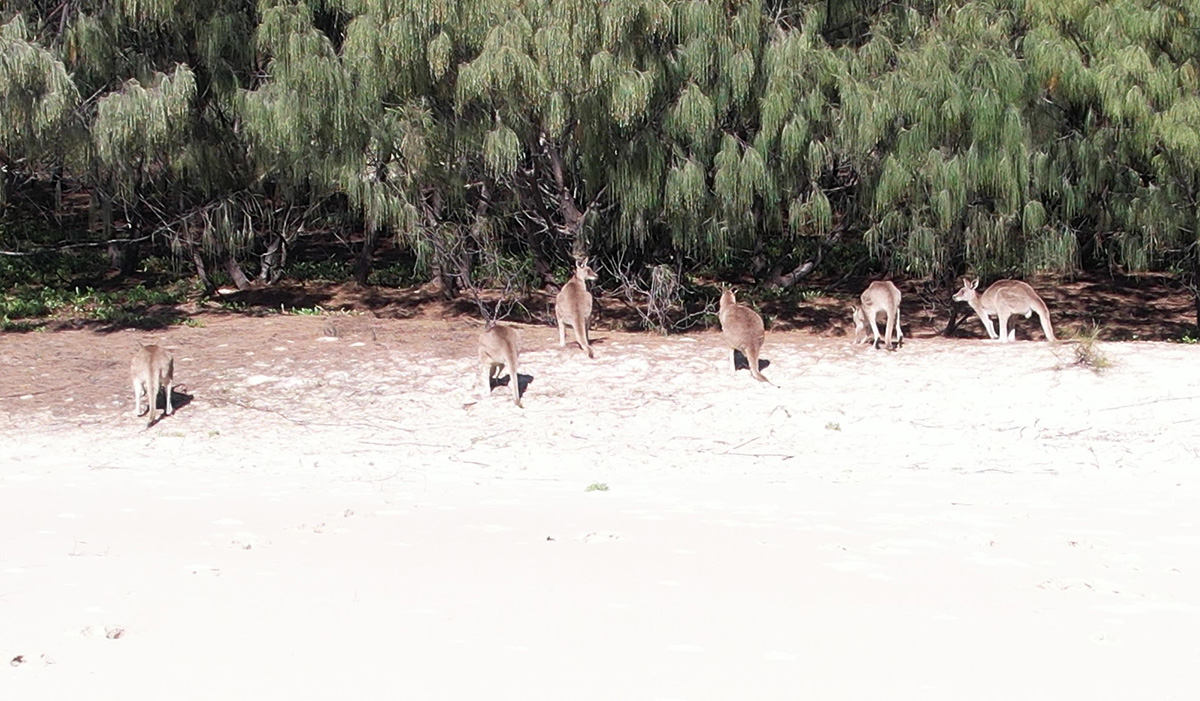
The spokesperson said they were also observing the northern island itself, which was getting smaller.
“The department’s Principal Coastal Scientist has been monitoring the changes to northern Bribie Island through satellite imagery and on ground surveys.”
“Erosion of the coast, north of the new entrance, appears to be continuing slowly.
“The eroded sand is moving south into the entrance of the Pumicestone Passage, where it is being deposited.
“Following storm erosion events, recovery and re-establishment of dunes and dune plants occurs naturally.
“The department continues to monitor the situation.”
Meanwhile, the department said the island does not have an official name.
But locals have come to call it any of northern Bribie Island, north Bribie Island and Bribie Island north.
See more of Damien’s photos via Instagram – @dlangeart.
Help us deliver more news by registering for our free daily news feed. All it requires is your name and email. See SUBSCRIBE at the top of this article.


